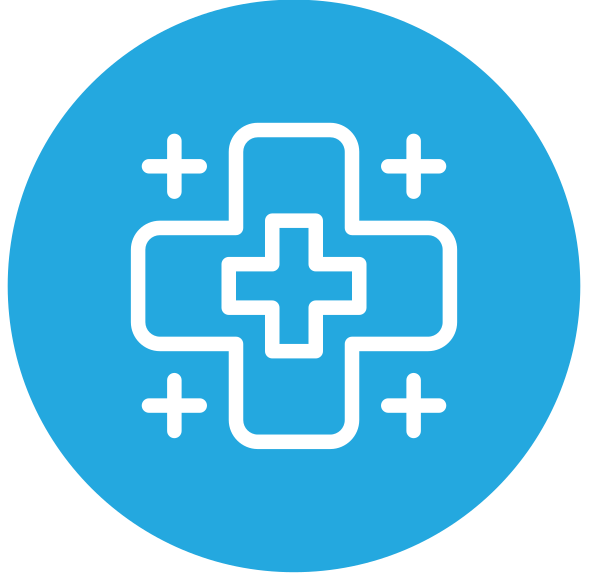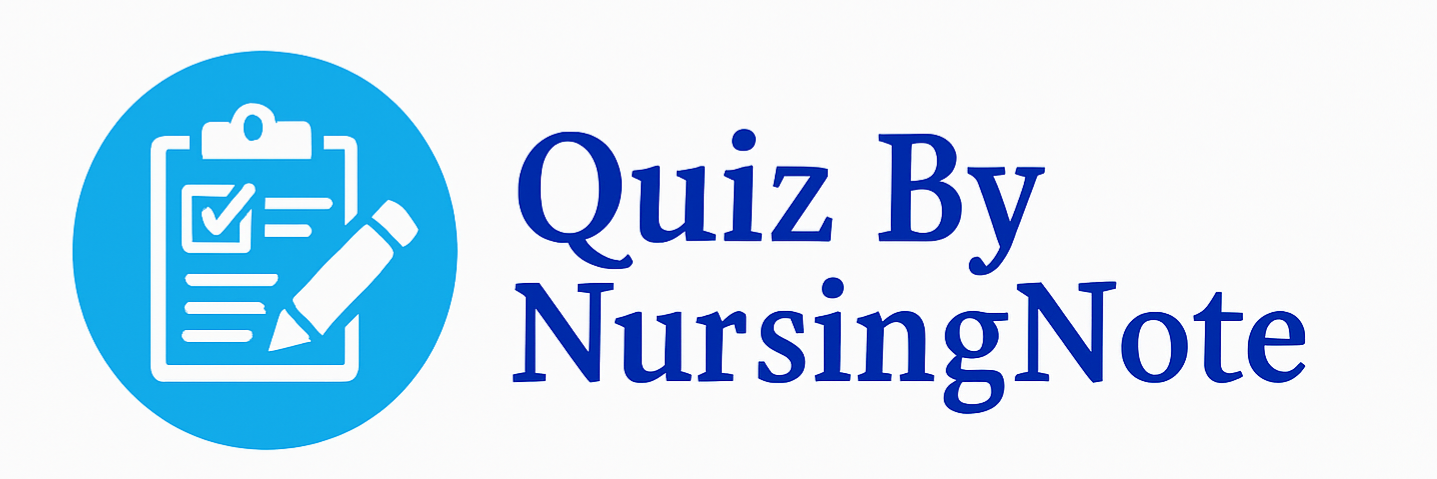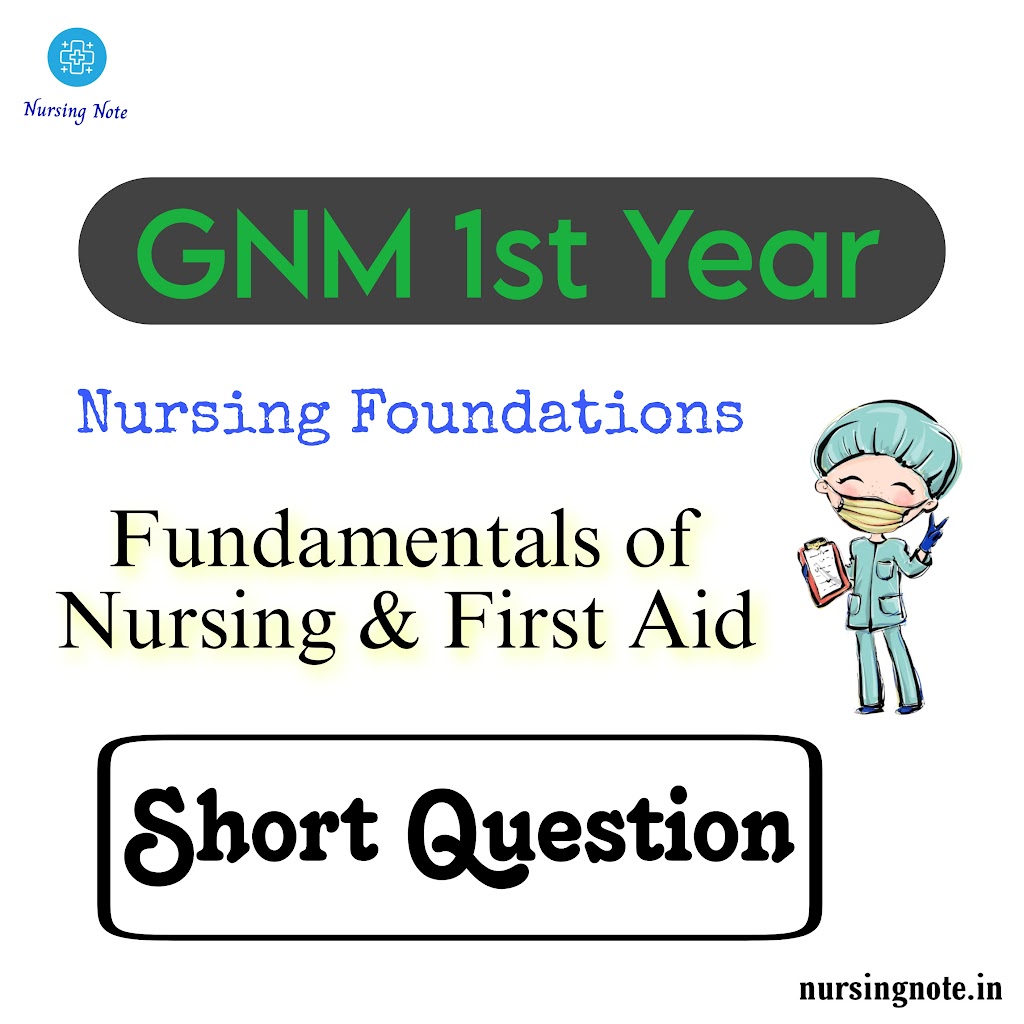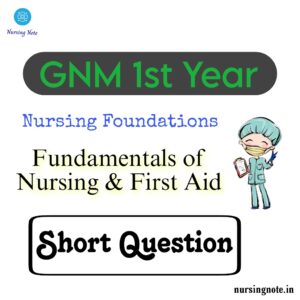Fundamentals Of Nursing Previous Year Short Question with Answer
Fill in the blanks:
1. Lack of oxygen in the tissue is
➡ Hypoxia
2. Inflammation of the oral mucus membrane
➡ Stomatitis
3. Gas in the gastrointestinal tract is
➡ Flatulence
4. Agents that inhibit the growth of microorganisms are
➡ Antiseptics
5. Instrument that is used to measure blood pressure is
➡ Sphygmomanometer
6. Air cushion is used to prevent
➡ Bedsores
7. Bleeding from the nose is termed as
➡ Epistaxis
8. Loss of appetite is termed as
➡ Anorexia
9. Introduction of medicine or fluids into the vein is called
➡ Intravenous
10. Examination by tapping the fingers on the body is termed as
➡ Percussion
11. Increased respiratory rate over 24 breaths per minute is
➡ Tachypnea
12. Loss of appetite is otherwise known as
➡ Anorexia
13. Lack of oxygen in the blood is called as
➡ Hypoxemia
14. Bluish discoloration of the skin is known as
➡ Cyanosis
15. The rules or principles that govern the right conduct in Nursing are called
➡ Nursing Ethics
16. Difficulty in swallowing is
➡ Dysphagia
17. Pulse rate less than 60 beats per minute is called
➡ Bradycardia
18. Examination with the help of a stethoscope is called
➡ Auscultation
19. The normal blood pressure is
➡ 120/80 mmHg
20. Inflammation of the tongue is called
➡ Glossitis
21. The primary source of data is
➡ Patient
22. The pioneer of modern nursing is
➡ Florence Nightingale
23. Lack of roughage in the diet leads to
➡ Constipation
24. Bleeding from the nose is known as
➡ Epistaxis
25. Inflammation of the oral mucous membrane is called
➡ Stomatitis
26. Total nursing care of a client is known as
➡ Holistic Care
27. Visual examination of the body is called as
➡ Inspection
28. The condition of abnormally high blood pressure is called
➡ Hypertension
29. The inner part of the syringe is called
➡ Plunger
30. Lack of oxygen in the tissues is called
➡ Hypoxia
31. The mechanical device used to relieve cardiac asthma is
➡ Oxygen Tent
32. Data can be classified as
➡ Subjective and Objective
33. When the body temperature is raised to 105°F, it is called
➡ Hyperpyrexia
34. Sterilization by steam under pressure is known as
➡ Autoclaving
35. The resistance to certain diseases is artificially attained by
➡ Immunization
36. The oral cavity is also called as
➡ Buccal Cavity
37. The total cessation of breathing is called
➡ Apnea
38. The inner part of the syringe is called
➡ Plunger
39. Blood pressure below normal is termed as
➡ Hypotension
40. Bleeding from the gums is called
➡ Gingivitis
41. The presence of glucose in urine is called
➡ Glycosuria
42. Elimination of waste products from the body is called
➡ Excretion
43. Inability to sleep is called
➡ Insomnia
44. The resistance to certain diseases is artificially attained by
➡ Immunization
45. Difficulty in breathing means
➡ Dyspnea
46. Stiffness of the body after death is
➡ Rigor Mortis
47. A process by which one conveys thoughts, feelings, and ideas to another is
➡ Communication
48. The amount of moisture in the air is
➡ Humidity
49. Cracking or ulceration of lips and angles of the mouth is
➡ Cheilitis
50. The thermoregulatory center situated in the brain is
➡ Hypothalamus
Read More: Behavioral Sciences (Psychology & Sociology) Previous Year Short Question with Answer
51. Phonation is another function of
➡ Larynx
52. Sterilization by steam under pressure is known as
➡ Autoclaving
53. Difficulty in swallowing is called as
➡ Dysphagia
54. Specific gravity of urine is measured by means of
➡ Urinometer
55. Lack of oxygen in the tissues is called
➡ Hypoxia
56. Loss of appetite means
➡ Anorexia
57. Florence Nightingale was born on
➡ May 12, 1820
58. Constipation can be avoided by
➡ High Fiber Diet
59. Cheilosis can occur due to
➡ Vitamin B2 Deficiency
60. Haemoptysis means
➡ Coughing up blood
61. Fever is not a disease, but it is a
➡ Symptom
62. Glossitis means
➡ Inflammation of the tongue
63. Etiquette is the code of
➡ Conduct
64. To assess an unconscious patient, _________ scale is used
➡ Glasgow Coma Scale
65. Trendelenburg position is used for examination of
➡ Pelvic Organs
66. Blue litmus turns red if urine is
➡ Acidic
Choose the Correct Answer from the Following:
1. The objects which are capable of transmitting diseases:
i. Sepsis
ii. Fomite
iii. Asepsis
iv. Pathogen
➡ Correct Answer: ii. Fomite
2. The mechanical device used to prevent foot drop is:
i. Bed block
ii. Foot rest
iii. Knee rest
iv. Back rest
➡ Correct Answer: ii. Foot rest
3. Pus in the urine is:
i. Anuria
ii. Oliguria
iii. Pyuria
iv. Dysuria
➡ Correct Answer: iii. Pyuria
4. The abnormal condition of the vertebral column characterized by an increased curvature of the lumbar spine:
i. Khyposis
ii. Lordosis
iii. Scoliosis
iv. Osteoporosis
➡ Correct Answer: ii. Lordosis
5. A drug that relieves fever:
i. Antipyretic
ii. Antitussive
iii. Analgesic
iv. Antiemetic
➡ Correct Answer: i. Antipyretic
6. Cleansing of the body cavity is called:
i. Instillation
ii. Inhalation
iii. Irrigation
iv. Ingestion
➡ Correct Answer: iii. Irrigation
7. Florence Nightingale was born on:
i. May 12th
ii. May 1st
iii. March 12th
➡ Correct Answer: i. May 12th
8. Hospital-acquired infection is known as:
i. Droplet infection
ii. Nosocomial infection
iii. Opportunistic infection
➡ Correct Answer: ii. Nosocomial infection
9. The mechanical device used to prevent foot drop is:
i. Bed block
ii. Foot rest
iii. Back rest
➡ Correct Answer: ii. Foot rest
10. Difficulty in breathing is called:
i. Apnoea
ii. Orthopnoea
iii. Dyspnoea
iv. Tachypnoea
➡ Correct Answer: iii. Dyspnoea
11. Presence of sugar in the urine is called:
i. Dysuria
ii. Anuria
iii. Glycosuria
iv. Oliguria
➡ Correct Answer: iii. Glycosuria
12. Rabies is caused by:
i. Rat bite
ii. Snake bite
iii. Insect bite
iv. Dog bite
➡ Correct Answer: iv. Dog bite
13. Benedict’s solution is used in the test of:
i. Urine for albumin
ii. Urine for sugar
iii. Urine for ketone bodies
iv. Urine for reaction
➡ Correct Answer: ii. Urine for sugar
14. Dyspneic patient can have the best position as:
i. Prone position
ii. Left lateral
iii. Supine position
iv. Fowler’s position
➡ Correct Answer: iv. Fowler’s position
15. Anoxia means:
i. Absence of O2 in tissues
ii. Presence of oxygen in tissues
iii. Lack of O2 in tissues
iv. Oxygen in blood
➡ Correct Answer: iii. Lack of O2 in tissues
16. The respiration regulating center is:
i. Cerebellum
ii. Hypothalamus
iii. Medulla oblongata
➡ Correct Answer: iii. Medulla oblongata
17. The instrument used to examine the eyes is:
i. Otoscope
ii. Ophthalmoscope
iii. Cystoscope
➡ Correct Answer: ii. Ophthalmoscope
18. Presence of sugar in the urine is:
i. Glycosuria
ii. Oliguria
iii. Albuminuria
➡ Correct Answer: i. Glycosuria
19. Heat causes:
i. Vasodilation
ii. Vasoconstriction
iii. Skin rashes
➡ Correct Answer: i. Vasodilation
20. The most suitable position for giving an enema is:
i. Left lateral
ii. Right lateral
iii. Upright position
➡ Correct Answer: i. Left lateral
21. Lack of oxygen in the bloodstream is:
i. Anoxemia
ii. Anoxia
iii. Anorexia
➡ Correct Answer: i. Anoxemia
22. The normal pulse rate of an adult is:
i. 72 bts/mt
ii. 120 bts/mt
iii. 140 bts/mt
➡ Correct Answer: i. 72 bts/mt
23. Constipation can be prevented by:
i. High fat diet
ii. High fiber diet
iii. High protein diet
➡ Correct Answer: ii. High fiber diet
24. Difference between axillary and rectal temperature is:
i. 4°C
ii. 2°C
iii. 6°C
➡ Correct Answer: ii. 2°C
25. Application of the drug to the skin is:
i. Inhalation
ii. Insertion
iii. Inunction
➡ Correct Answer: iii. Inunction
26. Hey’s test is for the presence of:
i. Albumin
ii. Acetone
iii. Bile Salts
➡ Correct Answer: iii. Bile Salts
27. Inspection of a body part is also called as:
i. Percussion
ii. Palpation
iii. Observation
➡ Correct Answer: iii. Observation
28. To relieve gaseous distention:
i. Sedative enema
ii. Carminative enema
iii. Nutritive enema
➡ Correct Answer: ii. Carminative enema
29. To correct the toxic factor, rubber tubing is boiled in:
i. 10% sodium bicarbonate
ii. 10% KMNO4 solution
iii. 10% citric acid
➡ Correct Answer: i. 10% sodium bicarbonate
30. The specific gravity of urine varies from:
i. 1.010 to 1.020
ii. 1.015 to 1.0125
iii. 1.016 to 1.025
➡ Correct Answer: iii. 1.016 to 1.025
Read More: Bio Science (Anatomy, Physiology and Microbiology) Previous Year Short Question with Answer



